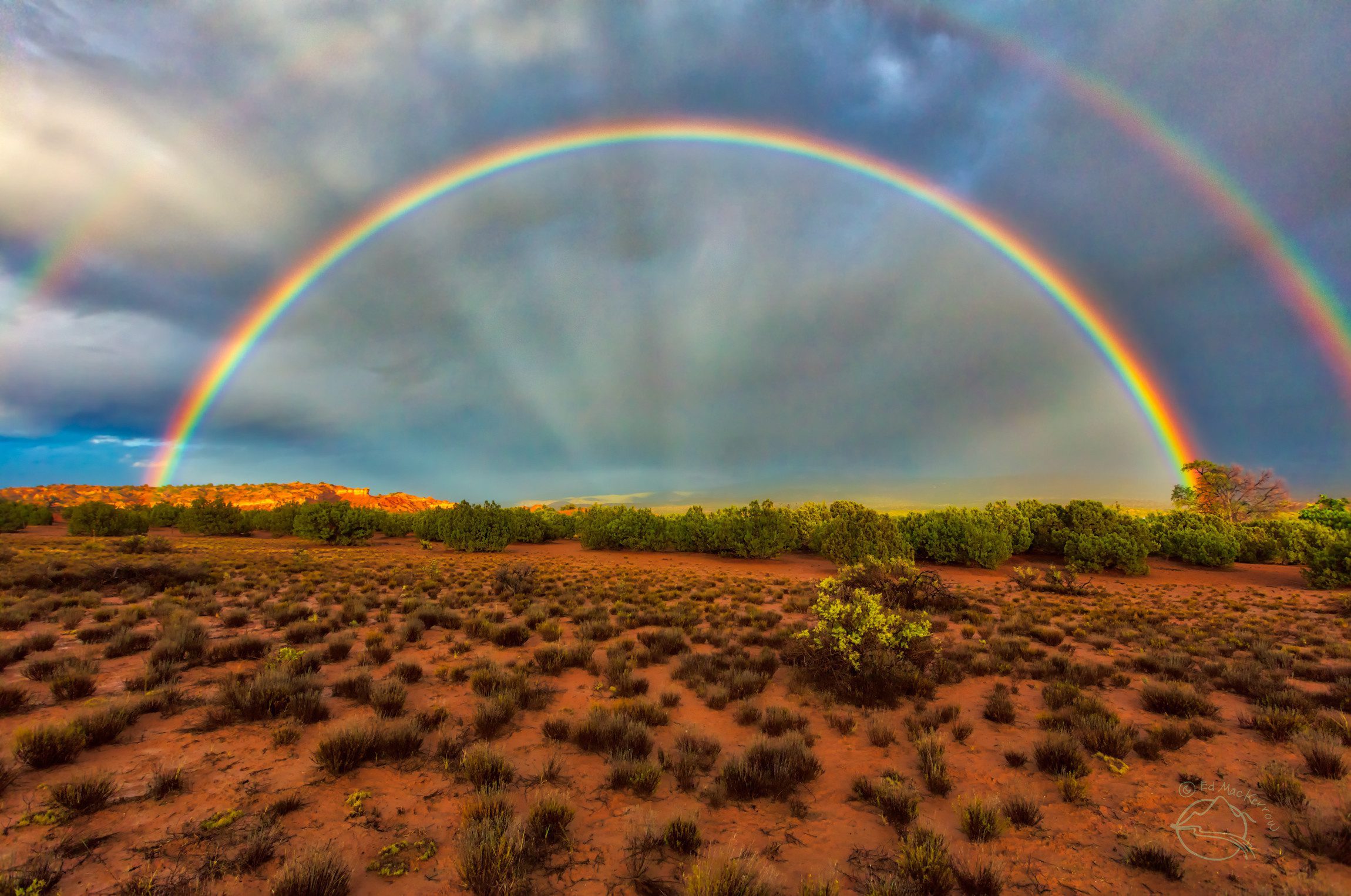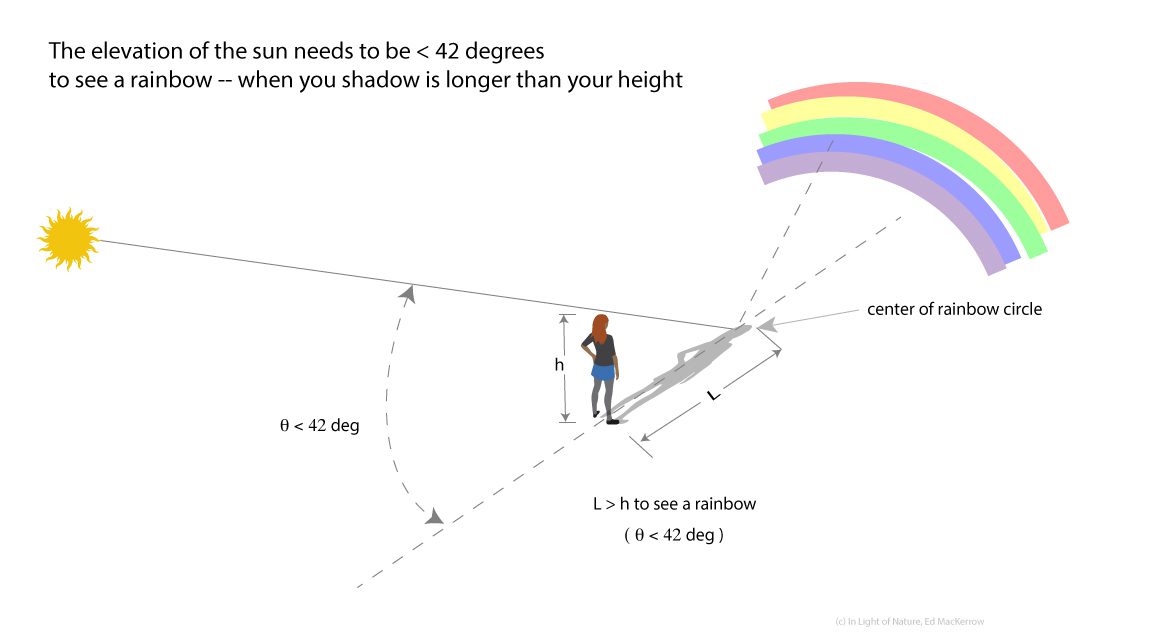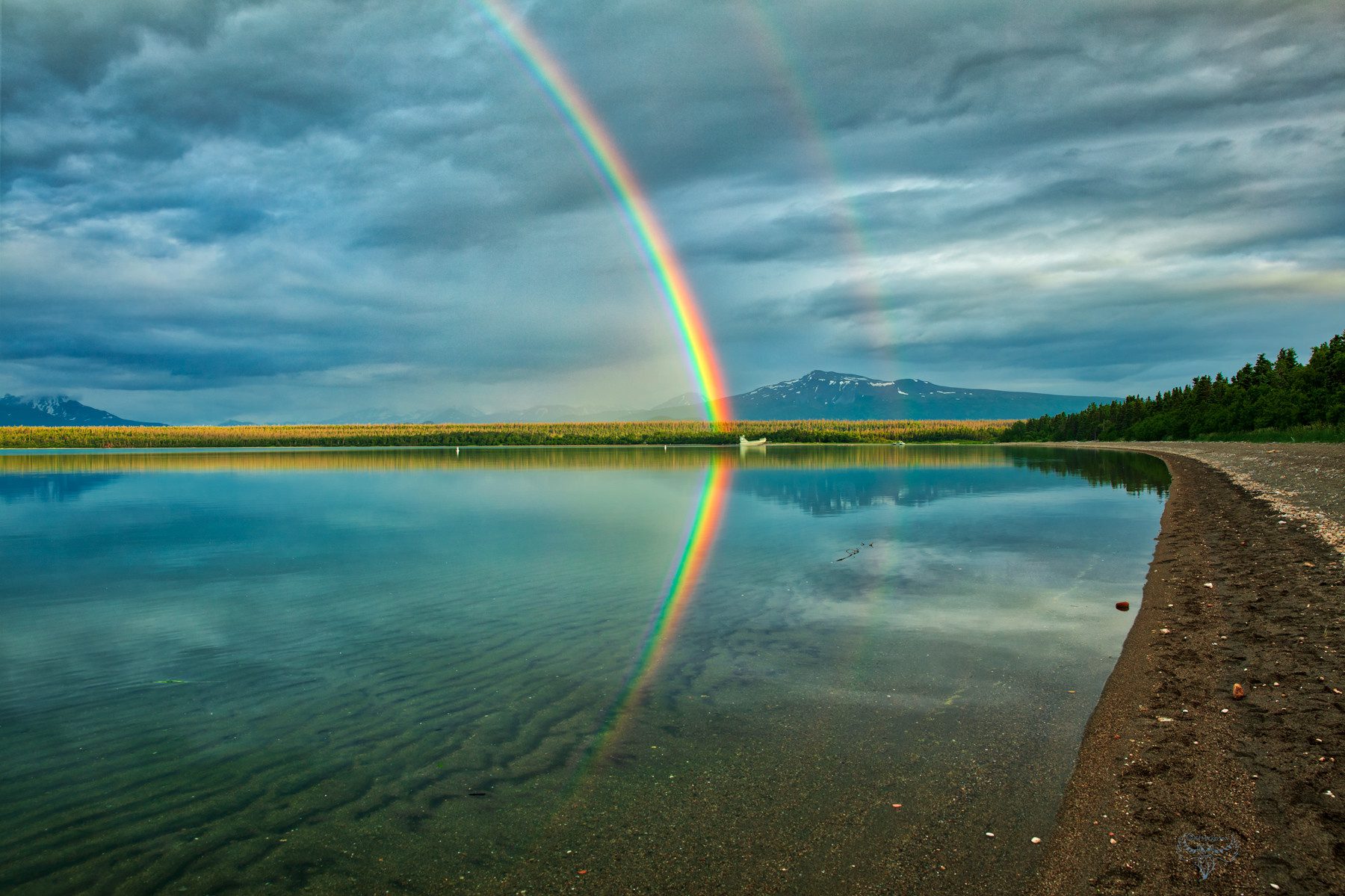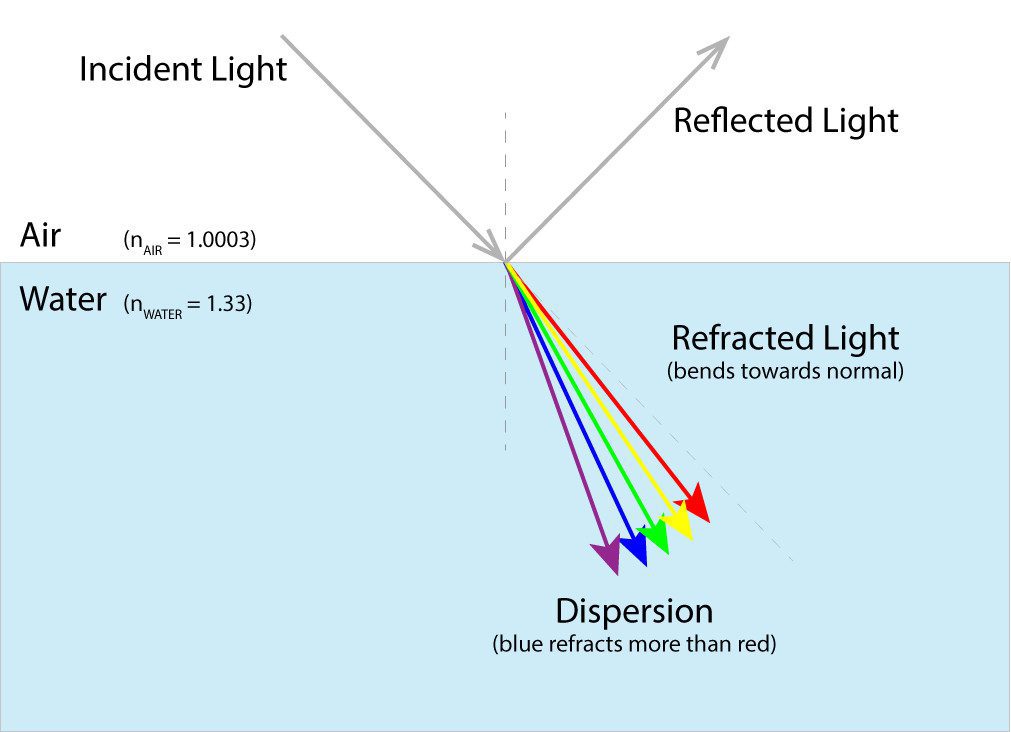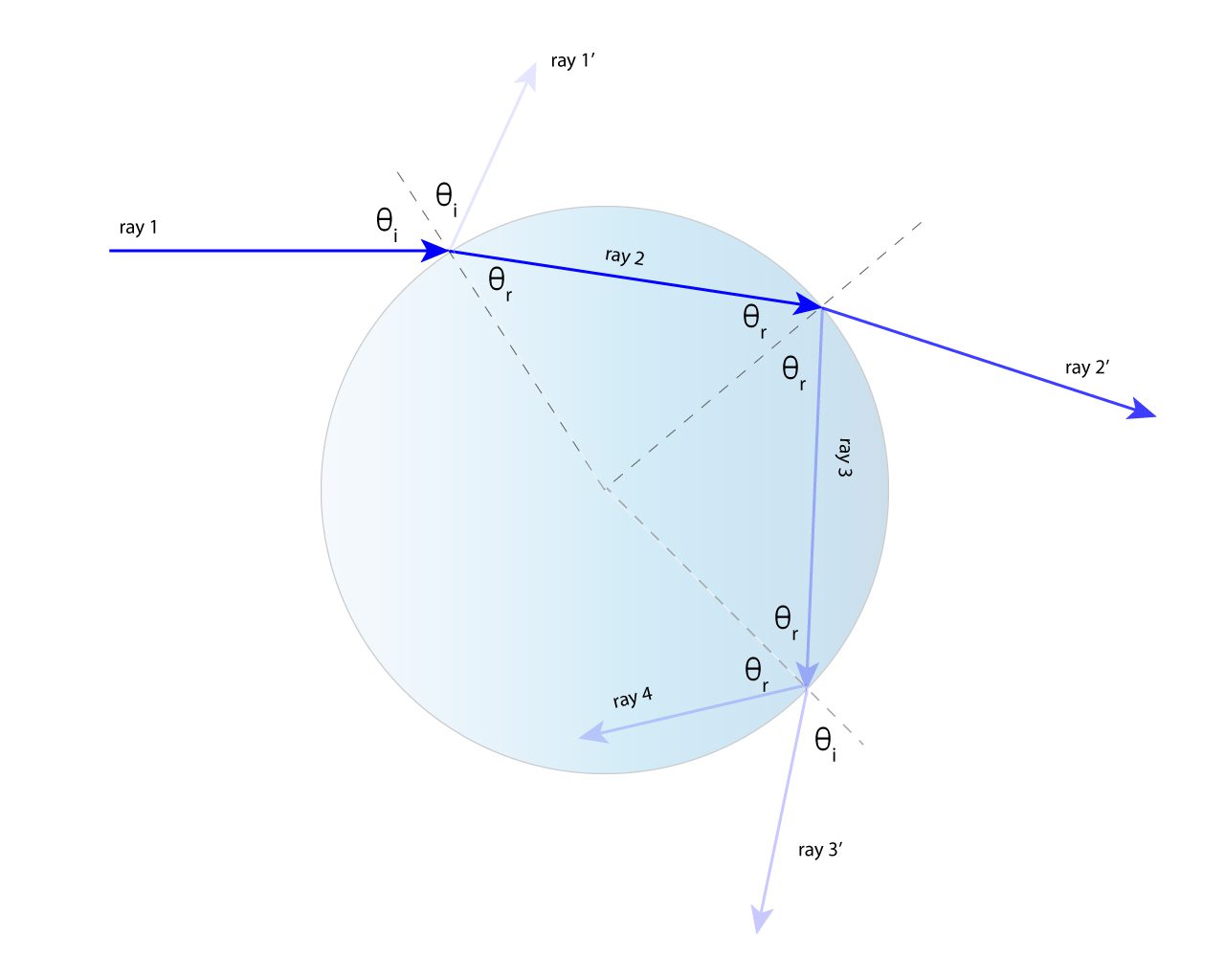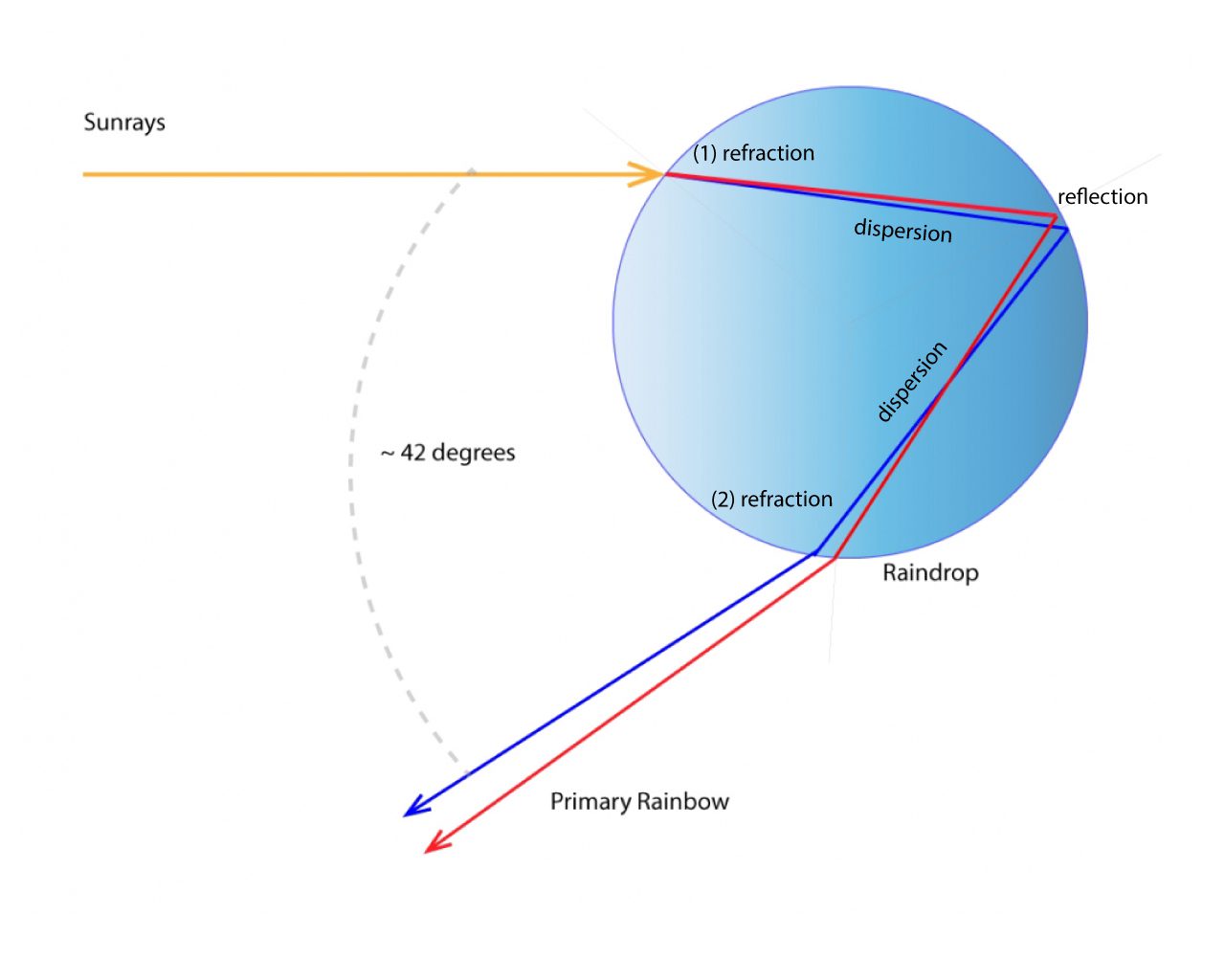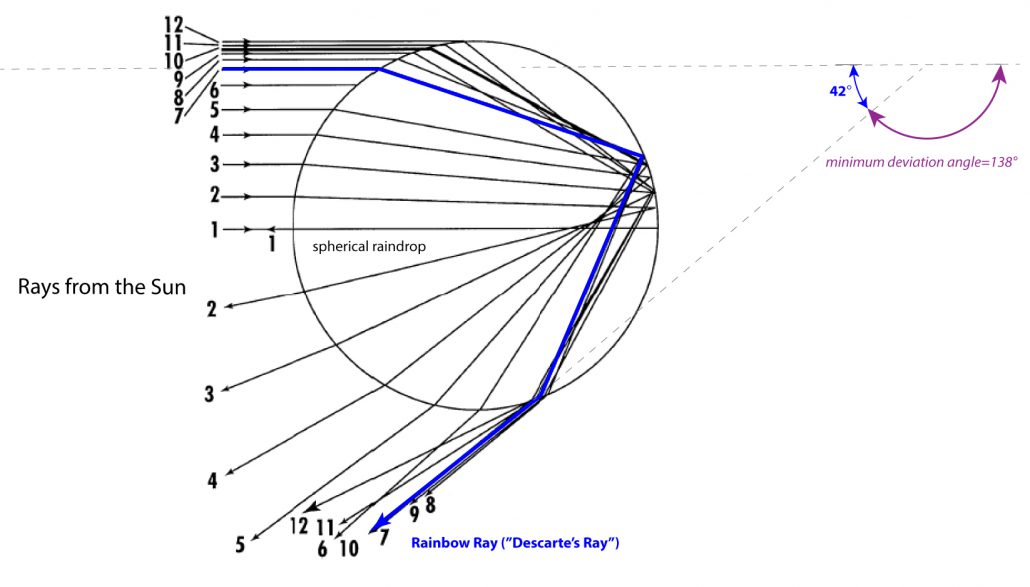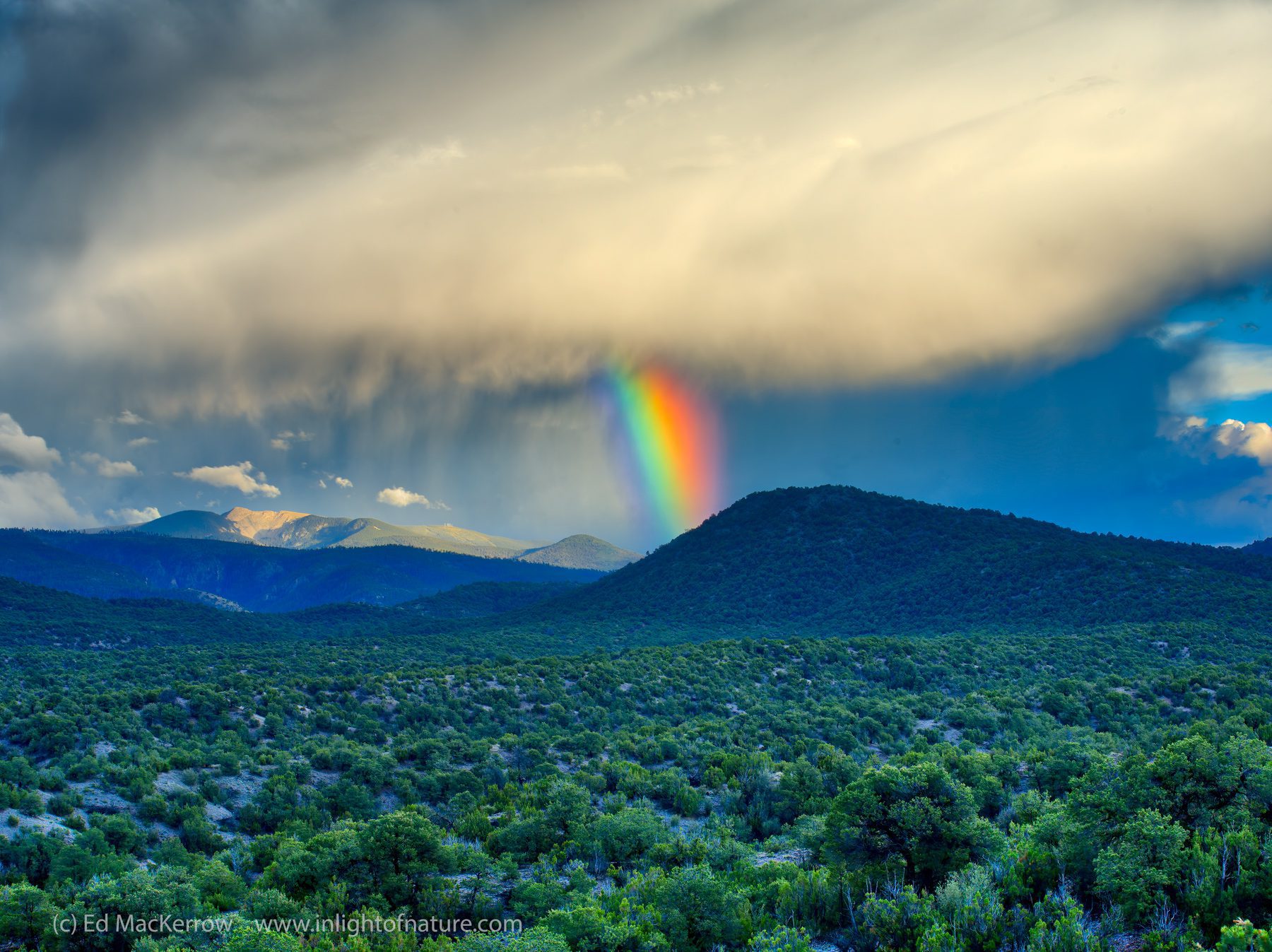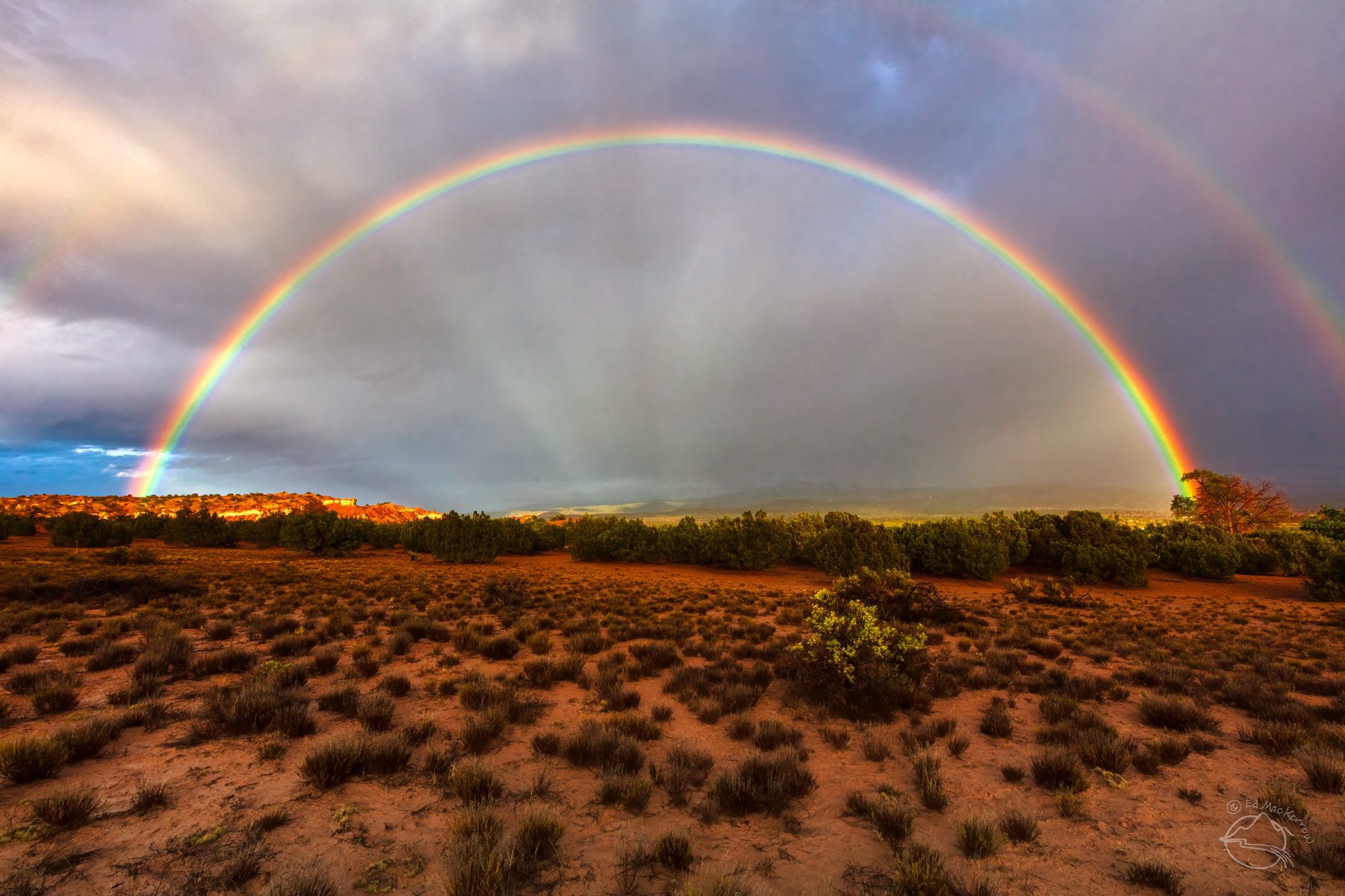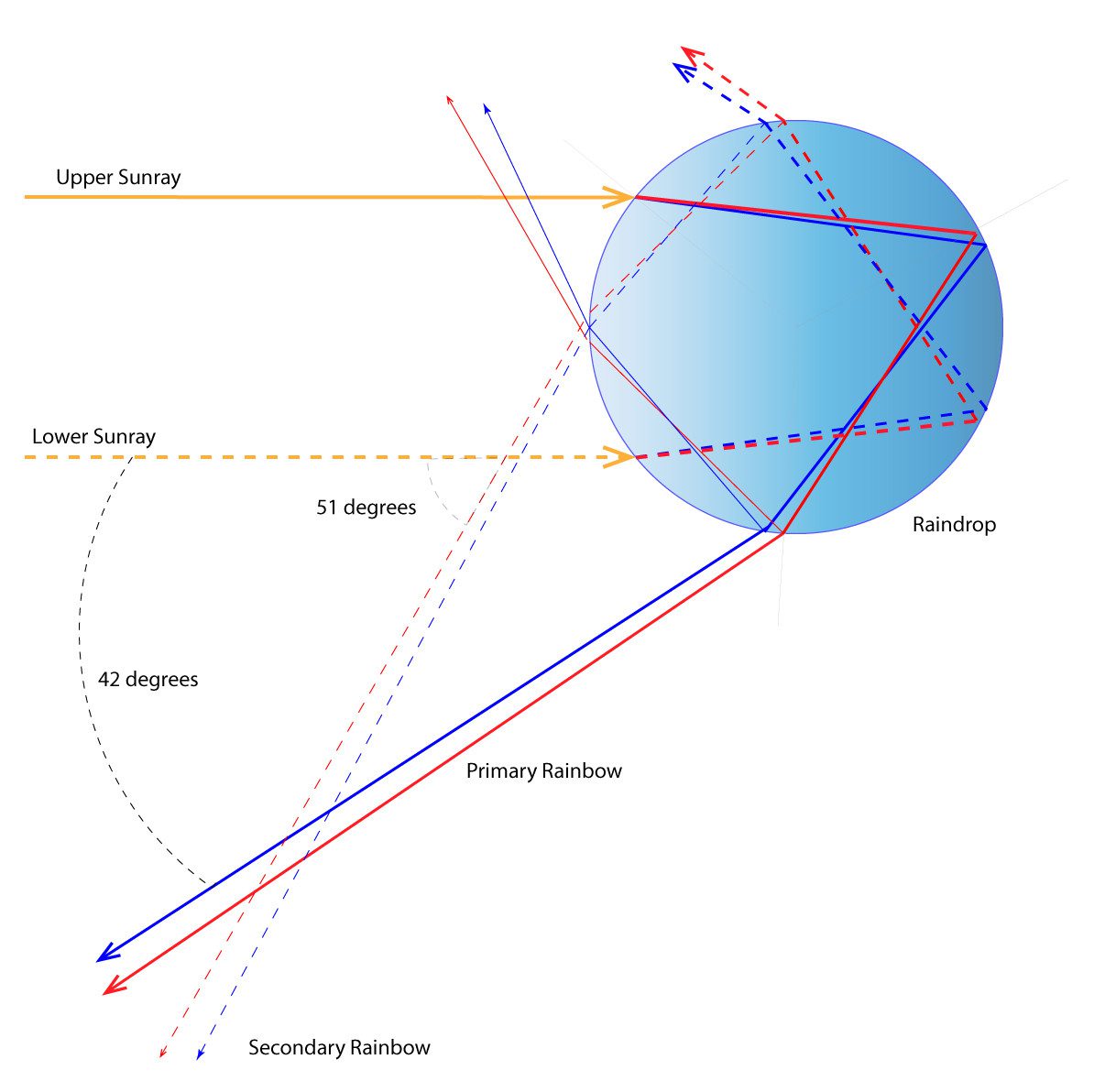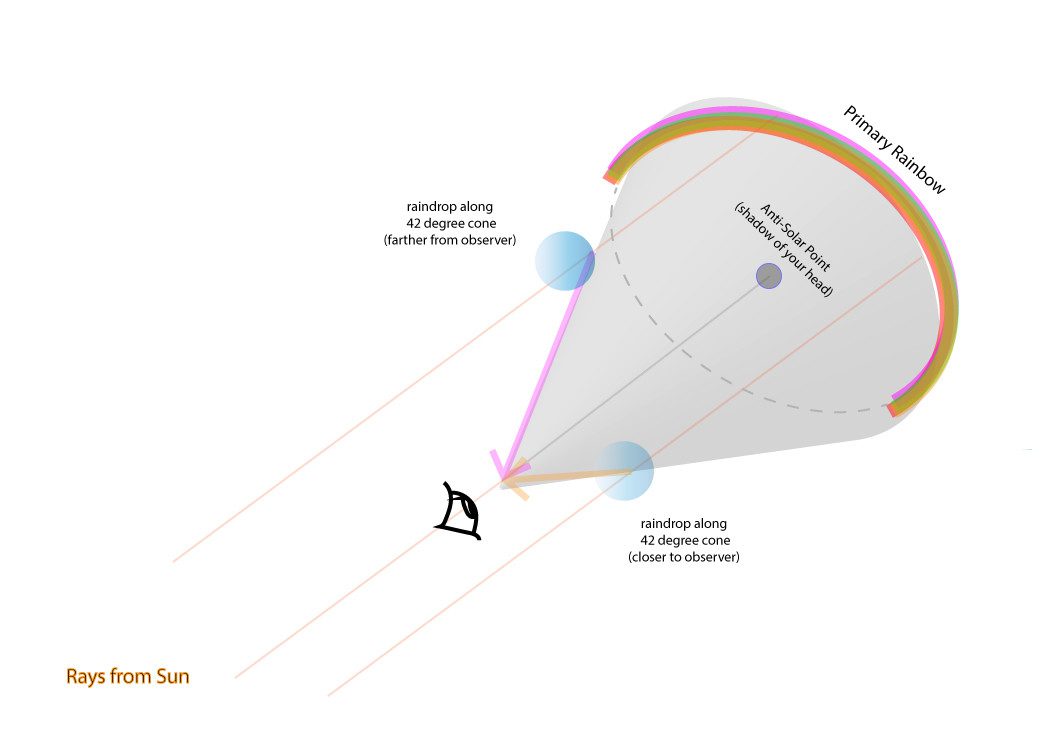In 1637 René Déscartes was able to explain the shape of the primary and double rainbow were caused by refraction and reflection in spherical raindrops.
In the laboratory, Déscartes produced rainbows by passing light through a large water-filled flask (to function as a large “raindrop”).
Déscartes applied the laws of reflection and refraction, formulated 16 years earlier by a Dutch scientist, Willebrord Snellius, known as Snell’s Law, to trace light rays through a water drop and correctly calculate the angles for the primary and secondary rainbow.
Déscartes was able to show a concentration of light rays around the minimum angle of deviation of the light rays. Light rays that refract twice (once upon entry into the raindrop and once upon exit of the raindrop) and reflect once off the interior back surface of the raindrop are deviated from their original direction. The angle of deviation depends on the distance from the centerline of the raindrop – known as the “impact parameter.”
Light rays that fall perpendicular to the surface of the raindrop, impact parameter = 0, reflect backward with a deviation angle of 180°.
Light rays that hit the raindrop further from the centerline/axis deviate less than 180°. As the impact parameter distance increases, the deviation angle decreases to a minimum value of 138° (for yellow light). This minimum deviation angle corresponds to Ray 7 in the adjacent ray-tracing diagram. As seen from the ray-tracing diagram, there is a concentration of light rays around this minimum deviation angle.
The concentration of light rays around this minimum deviation angle causes the brightness of the primary rainbow that we see — more light is redirected into this angular direction. Different colors have slightly different minimum deviation angles, hence the brightness for each colored arc of the rainbow.
When we transform the minimum deviation angle into the angle we observe the rainbow as measured from the antisolar point (the shadow of our head), we get 180° – 138° = 42°, the “rainbow angle” or “Déscartes Ray.”

